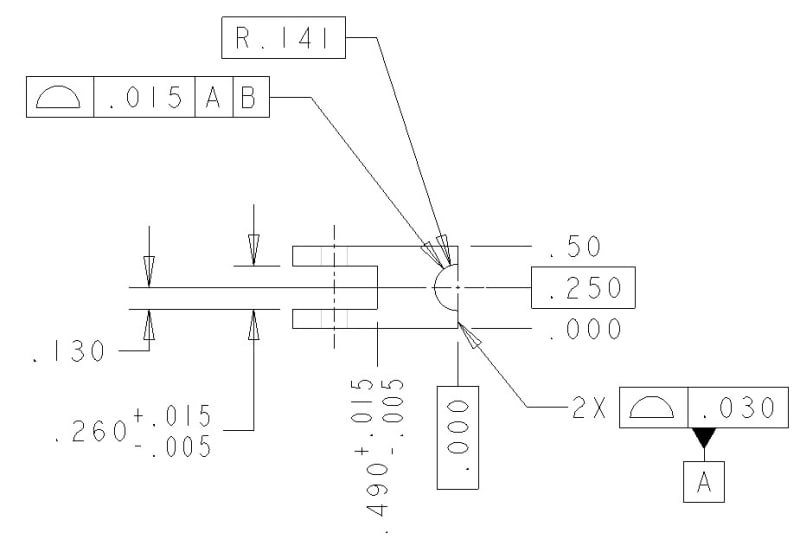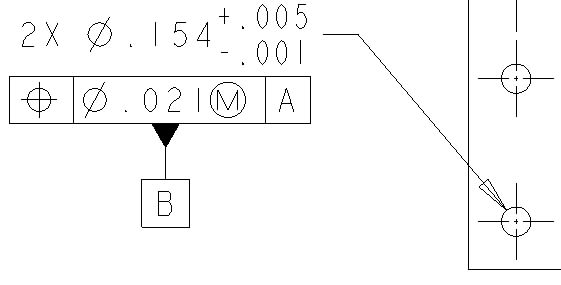Mitchell37
Mechanical
- Aug 24, 2020
- 5
Hello,
I am struggling with myself to determine if this feature should be called out as a diameter or as a radius. The feature is a hole which is in-line with the edge of the part, making it a semi-circle. I have attempted to attach 2 dimensioning schemes that I am caught between. I can't seem to find any standard to confirm which method is right (diameter callout or radius callout). So, my question to you is what is the correct way to callout the semi-circle feature? Is it a diameter? Is it a radius?
Diameter Callout
Radius Callout
Thanks
I am struggling with myself to determine if this feature should be called out as a diameter or as a radius. The feature is a hole which is in-line with the edge of the part, making it a semi-circle. I have attempted to attach 2 dimensioning schemes that I am caught between. I can't seem to find any standard to confirm which method is right (diameter callout or radius callout). So, my question to you is what is the correct way to callout the semi-circle feature? Is it a diameter? Is it a radius?
Diameter Callout
Radius Callout
Thanks


